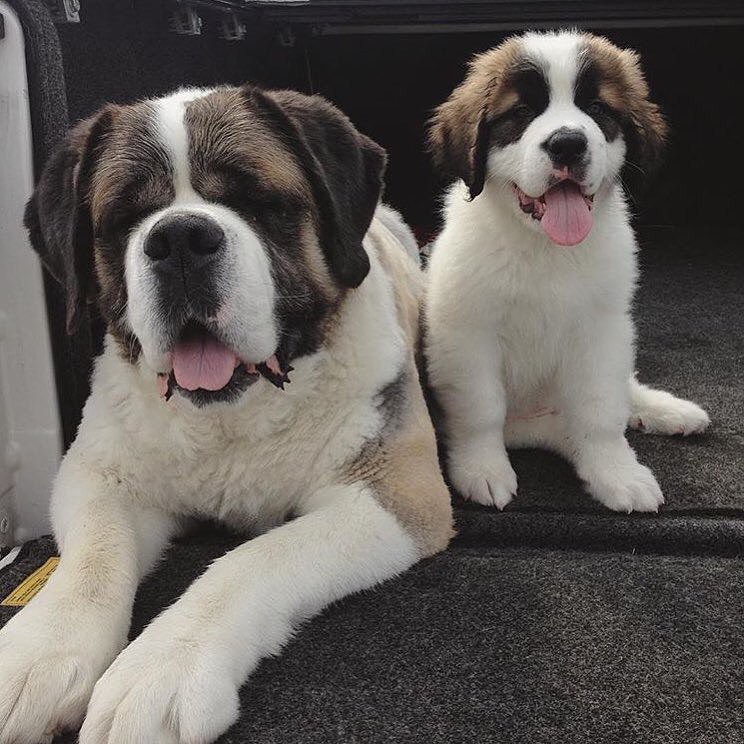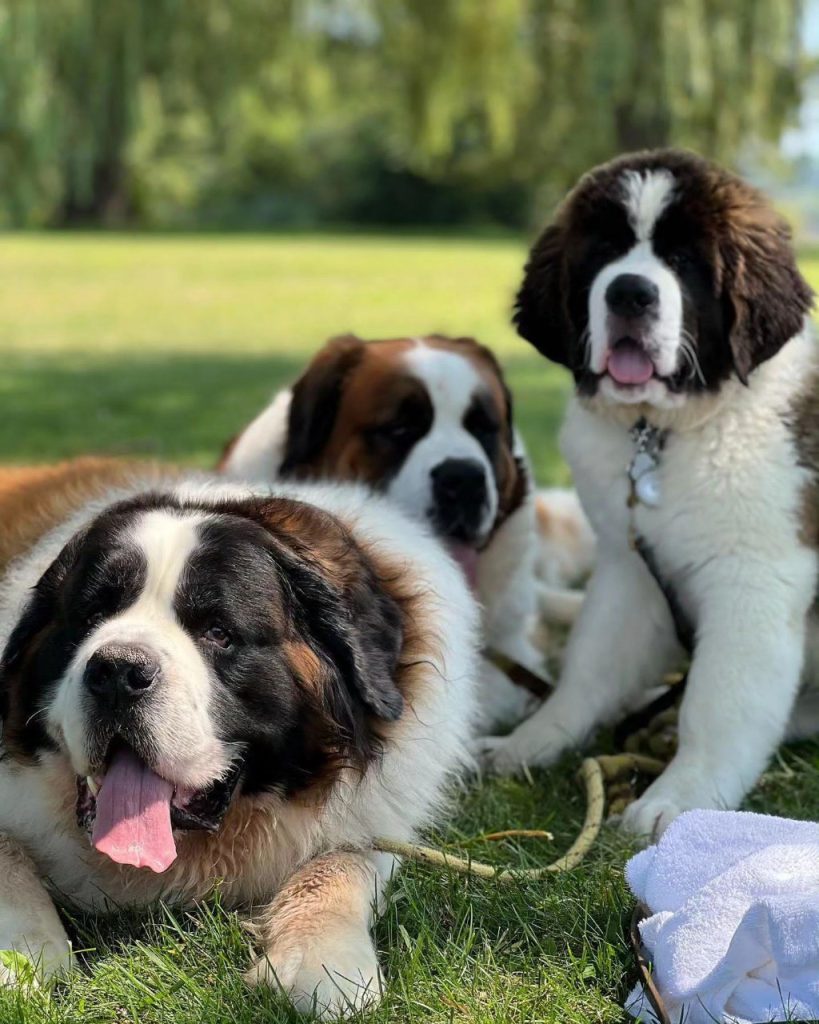The St. Bernard or Saint Bernard is a breed of very large working dog from the Western Alps in Italy and Switzerland. They were originally bred for rescue work by the hospice of the Great St Bernard Pass on the Italian-Swiss border.
Probably descended from mastifflike dogs that were introduced from Asia to Europe by the ancient Romans, the Saint Bernard appears to have been brought to the hospice in the late 17th century. The most famous of the hospice dogs was Barry, who reportedly saved more than 40 people before his death in the early 1800s. Saint Bernards have also been employed as cattle, draft, and guard dogs. The Saint Bernard does not rank very high in AKC registrations, but the genial giant of the Swiss Alps is nonetheless among the world’s most famous and beloved breeds. Saints are famously watchful and patient companions with a fondness for children.
The Breed Standard
A description of the ideal dog of each recognized breed, to serve as an ideal against which dogs are judged at shows, originally laid down by a parent breed club and accepted officially by national or international bodies
Temperament
Calm and easygoing, the Saint Bernard is a low-energy dog and a slow mover. It learns quickly but tends to respond methodically.They are Lively, Friendly, Gentle, Calm, Watchful
Life expectancy: 8 – 10 years
Colors
White with red or red with white, the red in its various shades; brindle patches with white markings. The colors red and brown-yellow are of entirely equal value. Necessary markings are:
white chest, feet and tip of tail, noseband, collar or spot on the nape, the latter and blaze are very desirable.
Never of one color or without white. Faulty are all other colors, except the favorite dark shadings on the head (mask) and ears. One distinguishes between mantle dogs and splashcoated dogs.
Care and upkeep
The Saint Bernard’s size makes upkeep challenging. It requires ample space inside the house and a large vehicle in which to travel. While the dog often prefers a hard cold surface, it can form callouses easily, so it should have the option of a very soft bed with good support. Owners should have an emergency stretcher or another means in place for moving an incapacitated dog of this size. Everything costs more with a giant breed, including food, drugs, surgeries, boarding, and bedding.
Saints are not a good choice for fastidious housekeepers, because the breed is prone to excessive drool, resulting in saliva on the floor, clothing, furniture, and sometimes even walls. In addition, the hotter the temperature, the more Saints drool. Saints of either coat type are not comfortable in warm weather, and overheating is a real concern for the breed. Air-conditioned living quarters are a necessity. When transporting Saints in warm weather, vehicles must be air-conditioned, and ice packs should be on hand in case the air-conditioning fails.
Although not excessively active, the Saint Bernard still needs about an hour of interactive playing or walking each day. However, exercise does not have to be strenuous and should not occur in warm weather. The breed enjoys games of tug, swimming, nose work, and trick training.
Coat care is minimal, consisting of weekly brushing and occasional bathing. However, daily brushing is recommended during the two shedding seasons (spring and fall). Bathing of the forechest and forelimbs may be needed more often if the dog drools on itself. Many owners have their Saint wear a bib to catch saliva.


